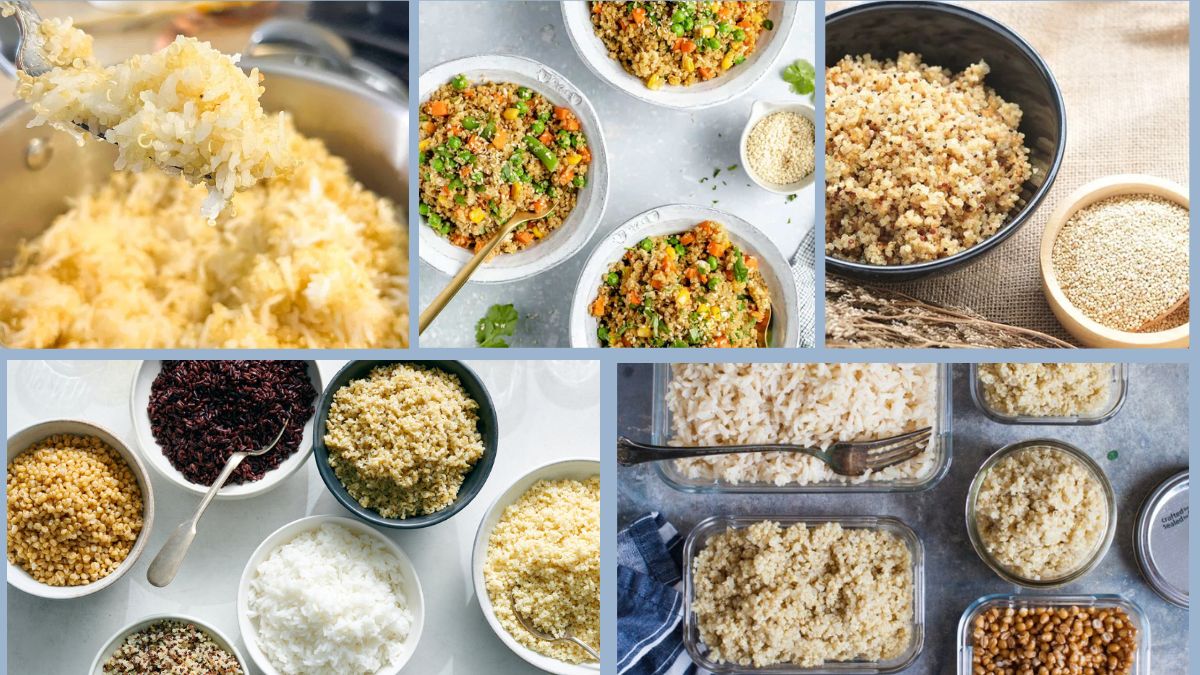Cooked grains like quinoa, rice, bulgur, millet, barley, and others form the cornerstone of many plant-based diets. They are versatile, nourishing, and easy to batch cook, making them perfect for weekly meal prep. But storing them properly is key to preserving flavor, texture, and safety.
In this in-depth guide, we’ll explore how to store a variety of cooked grains, how long they last, how to reheat them without losing quality, and how to avoid spoilage—all without the use of any non-vegetarian ingredients or content.
Why Proper Storage of Cooked Grains Matters
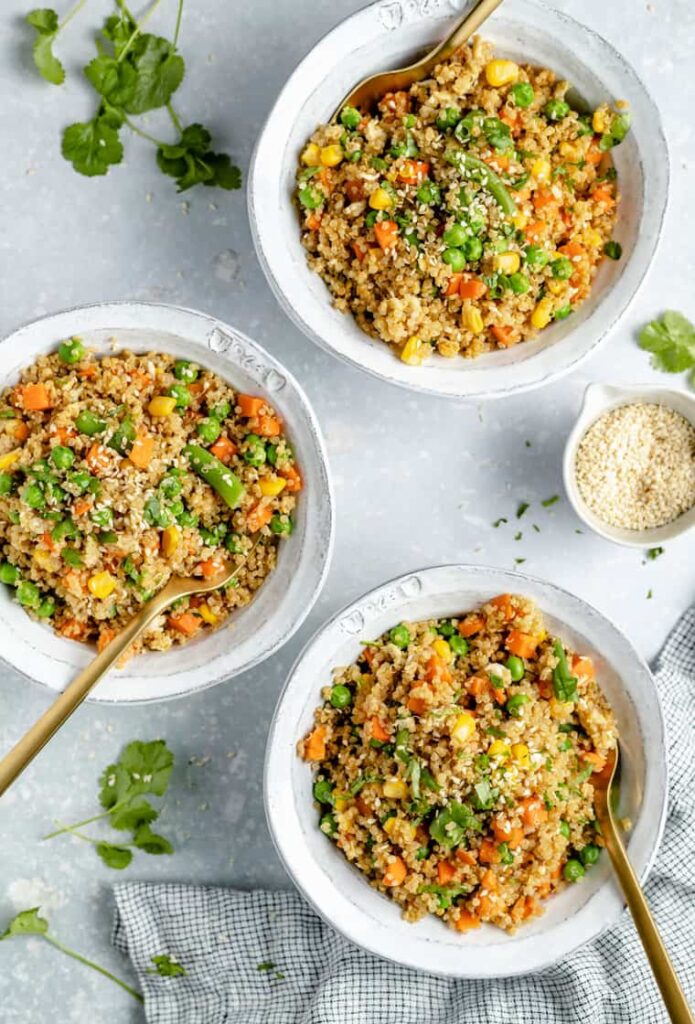
Grains are high in moisture and starch, which can make them breeding grounds for bacteria and mold if not stored correctly. Improper storage can lead to:
- Unpleasant texture (mushy or dried out)
- Sour smells or off-flavors
- Bacterial growth (including Bacillus cereus, a common foodborne bacteria)
- Waste of time, money, and food
With proper technique, cooked grains can be safely stored for up to a week in the fridge or longer in the freezer—ready to be turned into salads, bowls, soups, or stir-fries at a moment’s notice.
Best Grains for Cooking and Storage
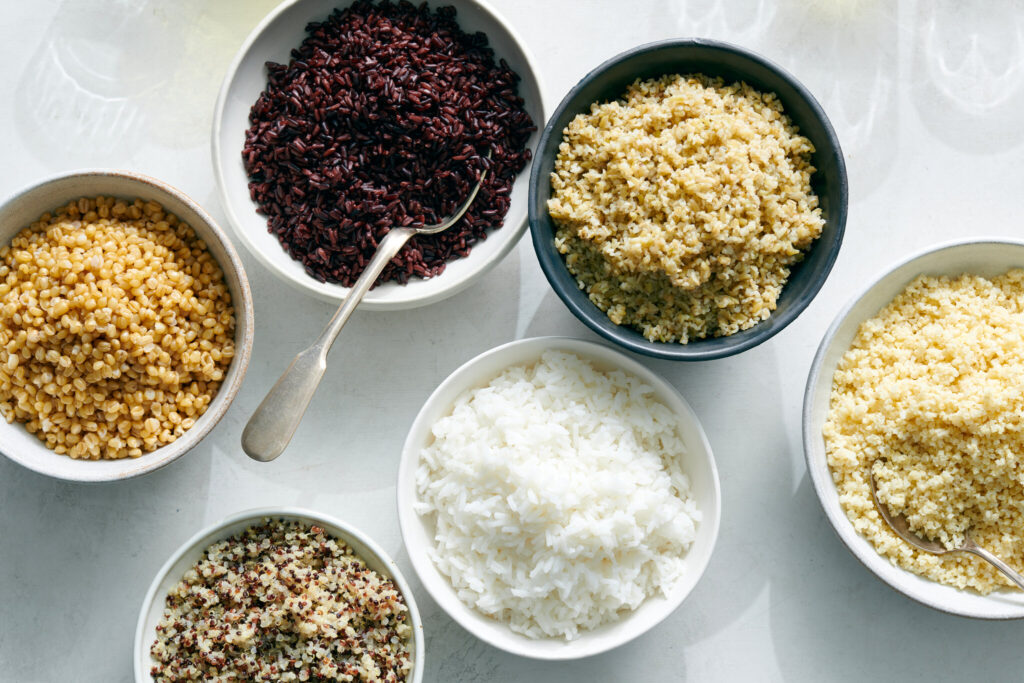
Before diving into storage, here’s a quick list of common whole grains that store well after cooking:
- Rice (brown, white, jasmine, basmati, wild)
- Quinoa (white, red, black)
- Millet
- Barley
- Farro
- Couscous (technically a pasta, but stored similarly)
- Bulgur wheat
- Amaranth
- Buckwheat groats
- Teff
All of these grains are plant-based and naturally vegan, making them ideal for vegetarian and whole-food lifestyles.
Step-by-Step: How to Store Cooked Grains
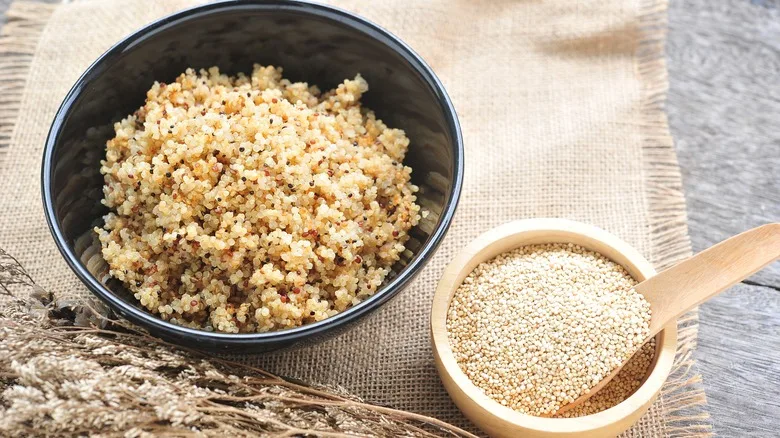
1. Cool Grains Quickly
After cooking, grains should be cooled to room temperature within two hours to prevent bacterial growth. The safest way to cool grains:
- Spread them on a baking sheet or wide plate to cool evenly
- Stir occasionally to release steam
- Avoid placing hot grains directly into the fridge—this can raise the internal temperature of the appliance and risk spoilage of other food
2. Use Airtight, Food-Safe Containers
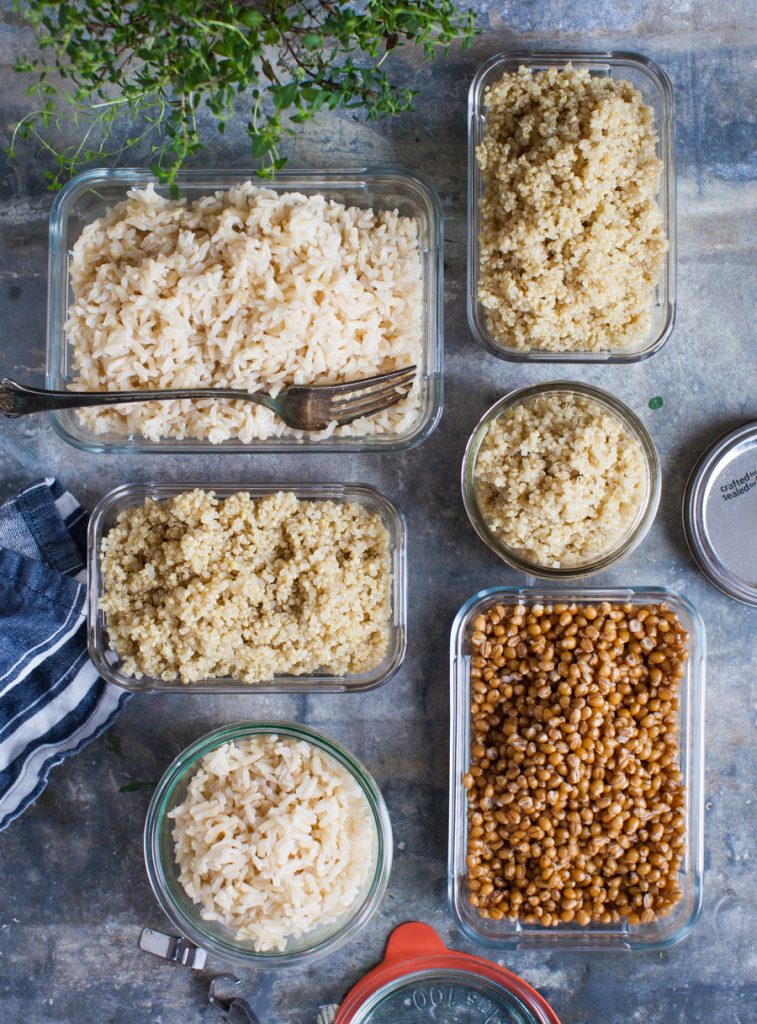
Choose appropriate containers for storage:
- Glass containers with tight-fitting lids – best for fridge and freezer
- BPA-free plastic containers – lighter and stackable
- Reusable silicone bags – flexible, space-saving
- Mason jars – ideal for portioning and layering grain salads
Avoid metal containers, as they can react with acidic ingredients (if pre-mixed) and may not be freezer-safe.
3. Label and Date
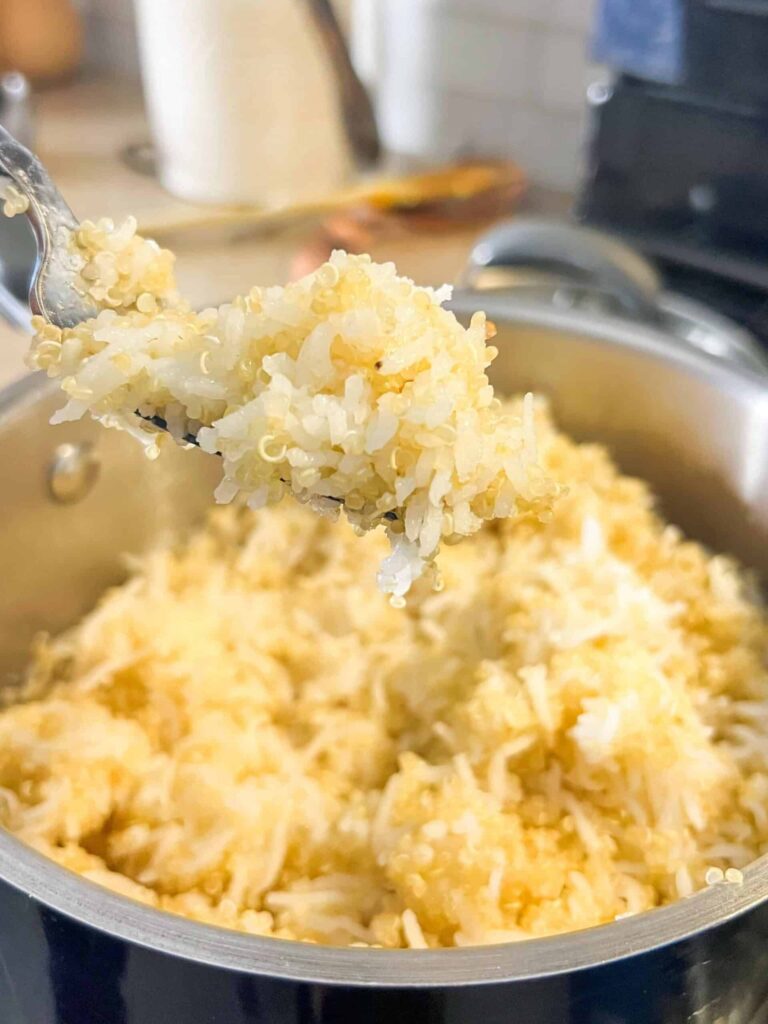
Always label stored grains with:
- Name (e.g., “quinoa”)
- Cook date
- Portion size (optional)
This helps you track freshness and reduce food waste.
4. Refrigerator Storage (Up to 5–6 Days)
Cooked grains should be stored in the fridge within 1–2 hours of cooking. Keep them in airtight containers to maintain moisture and prevent absorption of fridge odors.
Tips:
- Keep grains separate from sauces or toppings until use
- Place in the back of the fridge, where temperatures are more consistent
- Don’t store near raw produce or other perishables to reduce cross-contamination
5. Freezer Storage (Up to 3 Months)
Grains freeze remarkably well and can be portioned for easy reheating.
How to freeze cooked grains:
- Let the grains cool completely
- Spread on a baking sheet and freeze for 1 hour (optional but prevents clumping)
- Transfer to freezer-safe bags or containers
- Flatten bags for faster defrosting and space saving
- Label with name and freeze date
6. Portion for Convenience
Use portioned containers for easy grab-and-go meal prep. You can store:
- Single servings (about 1/2 to 1 cup) for individual meals
- Family-size portions for larger dishes like casseroles or grain salads
- Pre-measured amounts for recipes (e.g., 2 cups cooked rice for a stir-fry)
Safe Handling Tips to Avoid Spoilage
Grains are starchy, and bacteria love starchy environments. The following safety practices will help prevent contamination:
- Never leave cooked grains at room temperature for more than 2 hours
- Avoid reheating more than once – reheat only what you will eat
- Use clean utensils when scooping from storage containers
- Check for signs of spoilage: sour smell, discoloration, slimy texture
How to Reheat Cooked Grains
When you’re ready to use stored grains, reheat them carefully to bring back their soft, fluffy texture.
Microwave (Quick Method)
- Place grains in a microwave-safe bowl
- Add 1–2 tablespoons of water or broth
- Cover with a damp paper towel or microwave-safe lid
- Heat on high for 1–2 minutes, stir, then reheat as needed
Stovetop (Best for Texture)
- Add grains to a saucepan with a splash of water or broth
- Heat over medium-low, stirring occasionally
- Cover and steam for 5–7 minutes, or until heated through
Oven (For Large Portions)
- Preheat oven to 350°F (175°C)
- Place grains in an oven-safe dish, add moisture (water or broth)
- Cover with foil
- Bake for 15–20 minutes
Creative Ways to Use Stored Cooked Grains
Stored grains are incredibly versatile! Here are some plant-based dinner ideas you can whip up with pre-cooked grains:
1. Quinoa Power Bowl
- Cooked quinoa, chickpeas, avocado, kale, tahini dressing
2. Stuffed Bell Peppers
- Brown rice, black beans, corn, salsa, vegan cheese
3. Stir-Fried Rice
- Leftover rice, tofu, peas, carrots, soy sauce, sesame oil
4. Grain Salad Jars
- Layered quinoa, cucumber, tomato, olives, lemon vinaigrette
5. Barley Vegetable Soup
- Cooked barley, mixed veggies, herbs in vegetable broth
6. Millet Veggie Patties
- Cooked millet, mashed sweet potato, herbs, flaxseed meal
Sustainable Storage Tips
Keeping your kitchen eco-friendly while storing grains:
- Use reusable containers and bags
- Freeze in ice cube trays for sauces or grain portions (great for baby food or quick meals)
- Compost any spoiled or expired grains
- Repurpose leftover grains into homemade veggie burgers or flatbreads
Common Mistakes to Avoid
- Storing hot grains in the fridge – promotes bacterial growth
- Freezing in large clumps – difficult to thaw evenly
- Mixing sauces before storing – can cause sogginess or spoil faster
- Forgetting to label – leads to confusion and waste
- Using non-food-safe plastic containers – can leach chemicals
Quick Storage Reference Chart
| Grain Type | Fridge Shelf Life | Freezer Shelf Life | Best Reheating Method |
|---|---|---|---|
| White Rice | 4–5 days | 2–3 months | Microwave/Stovetop |
| Brown Rice | 4–5 days | 2–3 months | Microwave/Oven |
| Quinoa | 5–6 days | 3 months | Stovetop |
| Barley | 5 days | 3 months | Oven/Stovetop |
| Millet | 4–5 days | 2 months | Stovetop |
| Bulgur | 5 days | 2 months | Microwave |
Final Thoughts
Storing cooked grains the right way can save time, reduce food waste, and streamline your plant-based meals throughout the week. With the tips above, your kitchen can always be stocked with ready-to-eat, nutritious grains that are just a quick reheat away from becoming a delicious dinner.
Whether you’re prepping for a busy week, feeding a family, or cooking for one, mastering the storage of grains like quinoa and rice is a game-changer for every plant-based kitchen.
